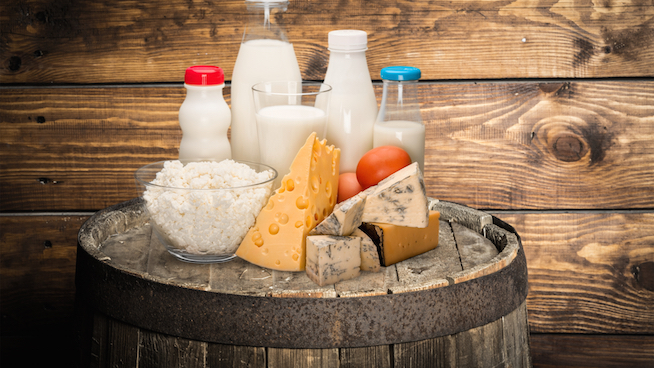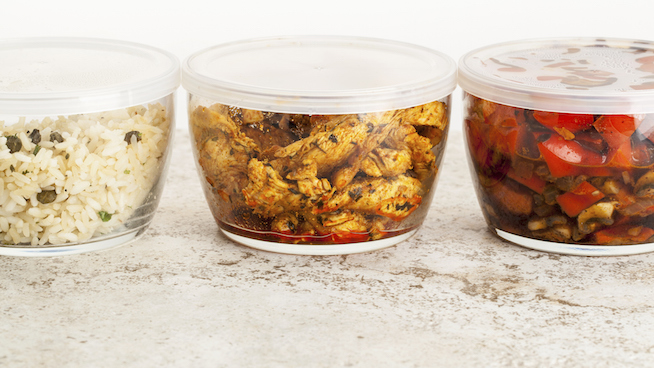The Surprising Health Benefits of Maple Syrup
A pile of fluffy, golden pancakes is incomplete unless its drizzled with the rich sweetness of maple syrup. But something that heavenly cannot possibly be good for you, can it?
Surprisingly, the answer is “yes.” Real maple syrup, unlike processed syrup, which uses high fructose corn syrup for it sweet taste, has properties that are beneficial to your health. A 2011 study out of the University of Rhode Island (URI) found that maple syrup possesses more than 50 natural phyochemicals, including some that have antioxidant properties comparable to those of vitamin C. (1)
Pancakes aren’t the only way to enjoy this sweet-but-healthy treat. Maple syrup can be substituted for sugar or honey in your morning oatmeal to give your breakfast a extra dose of vitamins and minerals. You can also use maple syrup instead of other sweeteners while baking. And for you workout junkies looking for a new way to fuel, a hit of the mighty maple might be just what you need to power you through an extended training session.
Why Maple Syrup?
URI’s research points out that maple syrup is more than a simple sweetener. While sugar, honey and corn syrup enter the bloodstream and cause your blood sugar to spike, maple syrup does not. According to Dr. Navindra Seeram, assistant pharmacy professor at URI and the study’s head researcher, “the polyphenols in maple syrup inhibit enzymes that are involved in the conversion of carbohydrate to sugar.” Certain properties of maple syrup actually restrict the body’s processing of energy into sugar, keeping blood sugar levels more balanced and helping you avoid glucose spikes—and later, the debilitating crashes that can occur when the sugar high wears off.
Adding a dose of maple syrup to your diet? Remember these guidelines:
- The darker the maple syrup, the higher its levels of antioxidants
- Syrup works as a one-to-one substitute for sugar in recipes. But when you switch from sugar to syrup, reduce the amount of liquid the recipe calls for by about half a cup
- You can also use syrup as a one-to-one substitute for liquid sweeteners like honey, molasses and corn syrup
Pre-Workout
A quick dose of simple carbohydrates can help you start a workout strong. Maple syrup delivers those carbs with anti-inflammatory compounds that help protect cells from oxidative damage, which exercise causes. So before you hit the gym, try incorporating maple syrup into your pre-workout snack. A good choice are KIND Maple Walnut Clusters with Chia and Quinoa. You could even sprinkle maple syrup over a bowl of Greek yogurt and berries for a potent mix of pre-workout protein and carbs. Or try your hand at this Maple Rice Pudding recipe.
During a Workout
Exercise causes you to lose valuable electrolytes like sodium and potassium, which help regulate your hydration level. Maple syrup contains 161 mg of potassium (3% of your daily requirement), so try this All-Natural Maple Sports Drink to keep your stamina up during a training session. (2)
Post-Workout
Two other minerals depleted by high-intensity workouts are manganese and zinc.(3) Manganese is known for its ability to enhance muscle and nerve function and to improve memory, concentration and overall mental stability.(3) Zinc is involved in important bodily functions like muscle protein synthesis, cellular growth and regeneration, which helps you heal from soreness and wounds. Low zinc levels can reduce your endurance capacity and energy levels.(3) Thankfully, a 1/4-cup serving of maple syrup delivers 44% of the USDA’s daily requirement for manganese and 41% of zinc. Get those valuable minerals back after a tough workout with a Fruity Maple Recovery Shake.
References
(1) Li, Liya, and Navindra P. Seeram. “Further investigation into maple syrup yields 3 new lignans, a new phenylpropanoid, and 26 other phytochemicals.” Journal of Agricultural and Food Chemistry 59.14 (2011): 7708-7716.
(2) Grob, David, Äke Liljestrand, and Richard J. Johns. “Potassium movement in normal subjects: effect on muscle function.” The American Journal of Medicine 23.3 (1957): 340-355.
(3) Rusin, VIa, V. V. Nasolodin, and V. A. Vorob’ev. “Iron, copper, manganese and zinc metabolism in athletes under high physical pressures].” Voprosy pitaniia 4 (1980): 15.
RECOMMENDED FOR YOU
MOST POPULAR
The Surprising Health Benefits of Maple Syrup
A pile of fluffy, golden pancakes is incomplete unless its drizzled with the rich sweetness of maple syrup. But something that heavenly cannot possibly be good for you, can it?
Surprisingly, the answer is “yes.” Real maple syrup, unlike processed syrup, which uses high fructose corn syrup for it sweet taste, has properties that are beneficial to your health. A 2011 study out of the University of Rhode Island (URI) found that maple syrup possesses more than 50 natural phyochemicals, including some that have antioxidant properties comparable to those of vitamin C. (1)
Pancakes aren’t the only way to enjoy this sweet-but-healthy treat. Maple syrup can be substituted for sugar or honey in your morning oatmeal to give your breakfast a extra dose of vitamins and minerals. You can also use maple syrup instead of other sweeteners while baking. And for you workout junkies looking for a new way to fuel, a hit of the mighty maple might be just what you need to power you through an extended training session.
Why Maple Syrup?
URI’s research points out that maple syrup is more than a simple sweetener. While sugar, honey and corn syrup enter the bloodstream and cause your blood sugar to spike, maple syrup does not. According to Dr. Navindra Seeram, assistant pharmacy professor at URI and the study’s head researcher, “the polyphenols in maple syrup inhibit enzymes that are involved in the conversion of carbohydrate to sugar.” Certain properties of maple syrup actually restrict the body’s processing of energy into sugar, keeping blood sugar levels more balanced and helping you avoid glucose spikes—and later, the debilitating crashes that can occur when the sugar high wears off.
Adding a dose of maple syrup to your diet? Remember these guidelines:
- The darker the maple syrup, the higher its levels of antioxidants
- Syrup works as a one-to-one substitute for sugar in recipes. But when you switch from sugar to syrup, reduce the amount of liquid the recipe calls for by about half a cup
- You can also use syrup as a one-to-one substitute for liquid sweeteners like honey, molasses and corn syrup
Pre-Workout
A quick dose of simple carbohydrates can help you start a workout strong. Maple syrup delivers those carbs with anti-inflammatory compounds that help protect cells from oxidative damage, which exercise causes. So before you hit the gym, try incorporating maple syrup into your pre-workout snack. A good choice are KIND Maple Walnut Clusters with Chia and Quinoa. You could even sprinkle maple syrup over a bowl of Greek yogurt and berries for a potent mix of pre-workout protein and carbs. Or try your hand at this Maple Rice Pudding recipe.
During a Workout
Exercise causes you to lose valuable electrolytes like sodium and potassium, which help regulate your hydration level. Maple syrup contains 161 mg of potassium (3% of your daily requirement), so try this All-Natural Maple Sports Drink to keep your stamina up during a training session. (2)
Post-Workout
Two other minerals depleted by high-intensity workouts are manganese and zinc.(3) Manganese is known for its ability to enhance muscle and nerve function and to improve memory, concentration and overall mental stability.(3) Zinc is involved in important bodily functions like muscle protein synthesis, cellular growth and regeneration, which helps you heal from soreness and wounds. Low zinc levels can reduce your endurance capacity and energy levels.(3) Thankfully, a 1/4-cup serving of maple syrup delivers 44% of the USDA’s daily requirement for manganese and 41% of zinc. Get those valuable minerals back after a tough workout with a Fruity Maple Recovery Shake.
References
(1) Li, Liya, and Navindra P. Seeram. “Further investigation into maple syrup yields 3 new lignans, a new phenylpropanoid, and 26 other phytochemicals.” Journal of Agricultural and Food Chemistry 59.14 (2011): 7708-7716.
(2) Grob, David, Äke Liljestrand, and Richard J. Johns. “Potassium movement in normal subjects: effect on muscle function.” The American Journal of Medicine 23.3 (1957): 340-355.
(3) Rusin, VIa, V. V. Nasolodin, and V. A. Vorob’ev. “Iron, copper, manganese and zinc metabolism in athletes under high physical pressures].” Voprosy pitaniia 4 (1980): 15.











